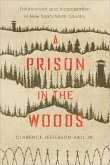The workhouse, reformatory, and penitentiary buildings of the Lorton Correctional Complex were built on land purchased by the federal government in 1910 and leased to the District of Columbia Department of Corrections to establish prisons. The men's workhouse was built in 1910, and a women's annex was added in 1912. A reformatory to rehabilitate prisoners convicted of more serious crimes was built in 1916. All three were constructed dormitory style with no cells or walls. A brick wall enclosed the penitentiary built to house serious felons in the 1930s. When the Lorton prisons closed in 2001, the complex had grown to 3,200 acres. Its story reflects the history of the 20th century as it was impacted by and reacted to the ideas, events, and people outside its walls.
Hinweis: Dieser Artikel kann nur an eine deutsche Lieferadresse ausgeliefert werden.
Hinweis: Dieser Artikel kann nur an eine deutsche Lieferadresse ausgeliefert werden.








